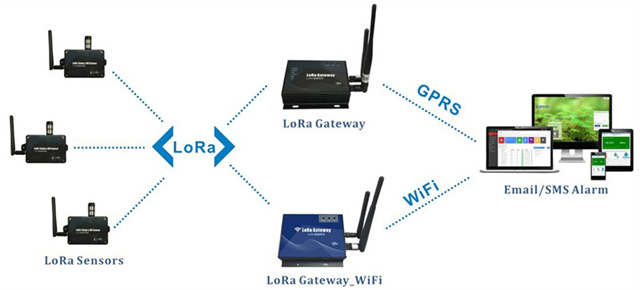The edge computing IoT gateway is an important part of realizing an intelligent IoT system. With the rapid development and popularization of IoT technology, various smart devices are connected to each other to form a huge IoT network. As the connection hub of the Internet of Things, the IoT gateway can realize data transmission and processing between smart devices and plays a vital role.

Edge computing is a technology that moves computing power to the location closest to the data source, pushing data processing and analysis to the edge of the IoT network, reducing data transmission volume and delay, and improving the real-time performance and response speed of the system. . The introduction of edge computing gives IoT systems more powerful data processing and decision-making capabilities, providing better support for intelligent applications in various industries.
In traditional IoT systems, smart devices usually send the collected data to the cloud server for processing and storage, and then return control instructions to the smart device from the cloud. However, with the rapid growth in the number of IoT devices, the amount of data transmission to the cloud has also increased exponentially, posing challenges to network bandwidth and transmission latency. The edge computing Gateway IoT can process and analyze the collected data in real time, and only upload key data to the cloud, reducing network load and improving system efficiency.
Gateways IoT based on edge computing can not only reduce the amount of data transmission, but also enable local control of IoT devices. In some scenarios, specific devices require real-time response and decision-making and cannot rely on remote cloud servers. By installing edge computing modules on IoT gateways, local data analysis and decision-making on devices can be realized, response speed and reliability can be improved, and application scenarios with high real-time requirements can be met.

In addition, edge computing IoT gateways can also provide higher security and privacy protection. Since some data is processed and stored locally, edge computing IoT gateways can avoid transmitting sensitive data directly to the cloud, reducing the risk of data leakage. At the same time, the IoT gateway can be equipped with identity authentication and authority management for access devices to strengthen the security protection of the IoT network.
To sum up, edge computing IoT gateways can not only reduce the amount of data transmission, improve the response speed and efficiency of the system, but also protect the security and privacy of data by moving computing power to the location closest to the data source. With the continuous advancement of IoT technology, edge computing IoT gateways will play a more important role in various fields and promote the intelligent development of the IoT.